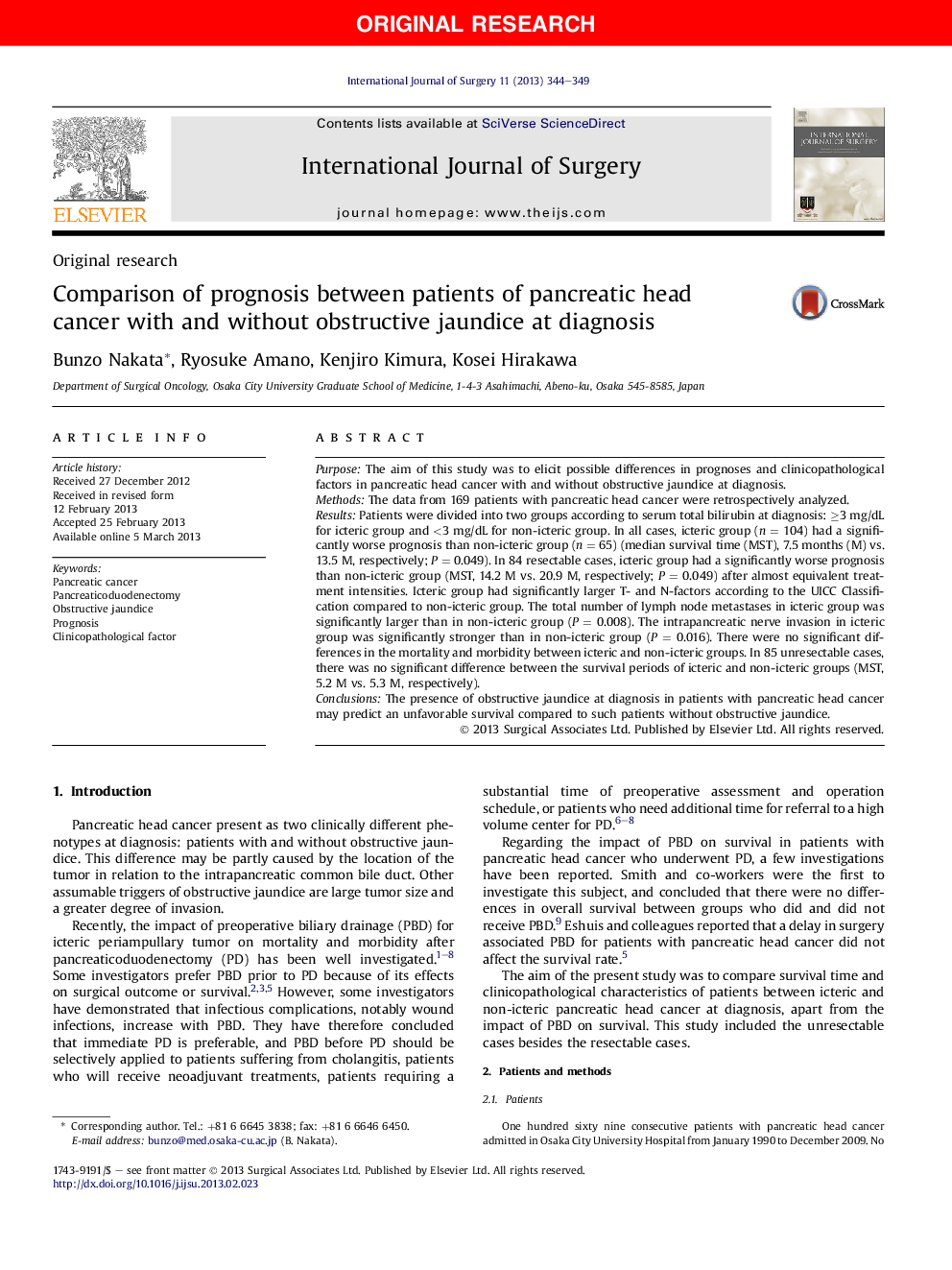| Article ID | Journal | Published Year | Pages | File Type |
|---|---|---|---|---|
| 4286345 | International Journal of Surgery | 2013 | 6 Pages |
PurposeThe aim of this study was to elicit possible differences in prognoses and clinicopathological factors in pancreatic head cancer with and without obstructive jaundice at diagnosis.MethodsThe data from 169 patients with pancreatic head cancer were retrospectively analyzed.ResultsPatients were divided into two groups according to serum total bilirubin at diagnosis: ≥3 mg/dL for icteric group and <3 mg/dL for non-icteric group. In all cases, icteric group (n = 104) had a significantly worse prognosis than non-icteric group (n = 65) (median survival time (MST), 7.5 months (M) vs. 13.5 M, respectively; P = 0.049). In 84 resectable cases, icteric group had a significantly worse prognosis than non-icteric group (MST, 14.2 M vs. 20.9 M, respectively; P = 0.049) after almost equivalent treatment intensities. Icteric group had significantly larger T- and N-factors according to the UICC Classification compared to non-icteric group. The total number of lymph node metastases in icteric group was significantly larger than in non-icteric group (P = 0.008). The intrapancreatic nerve invasion in icteric group was significantly stronger than in non-icteric group (P = 0.016). There were no significant differences in the mortality and morbidity between icteric and non-icteric groups. In 85 unresectable cases, there was no significant difference between the survival periods of icteric and non-icteric groups (MST, 5.2 M vs. 5.3 M, respectively).ConclusionsThe presence of obstructive jaundice at diagnosis in patients with pancreatic head cancer may predict an unfavorable survival compared to such patients without obstructive jaundice.
